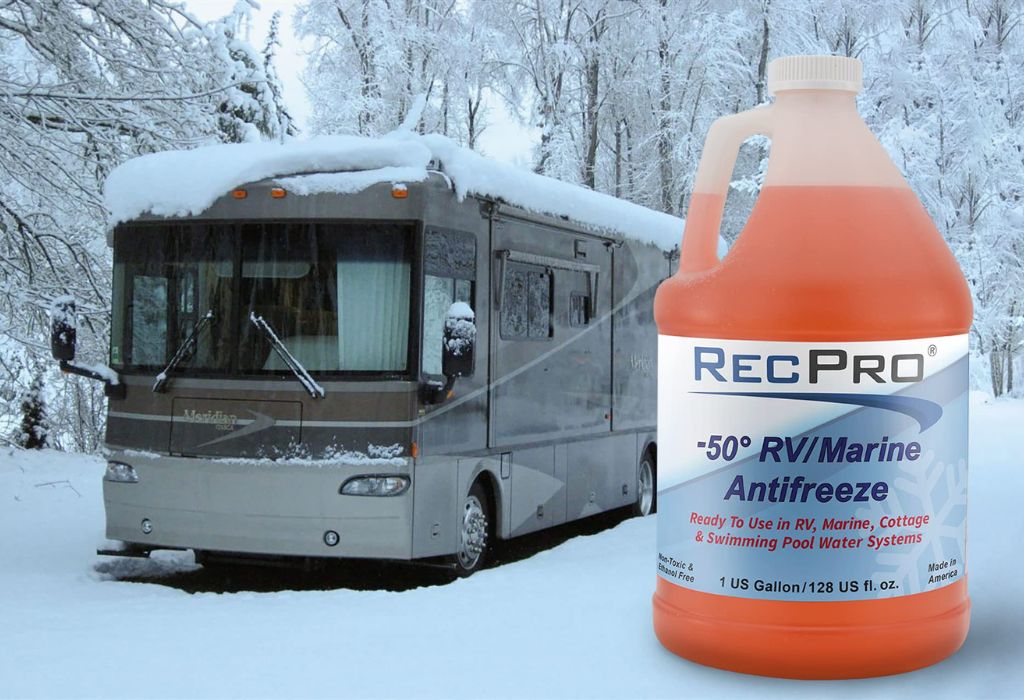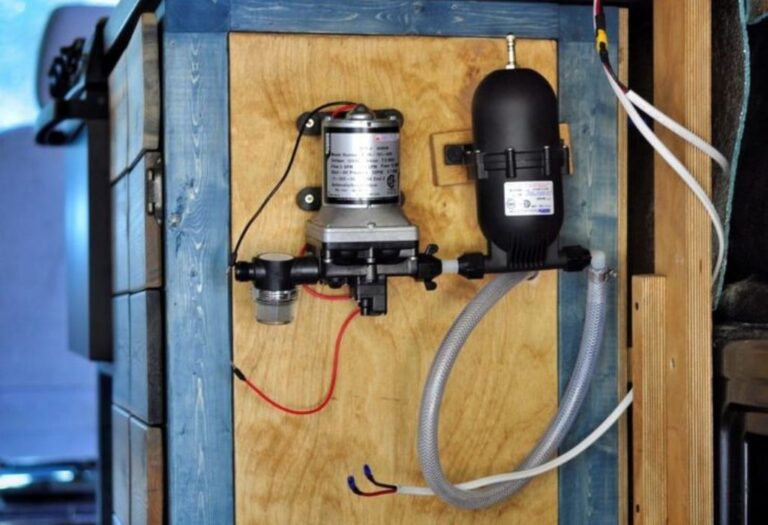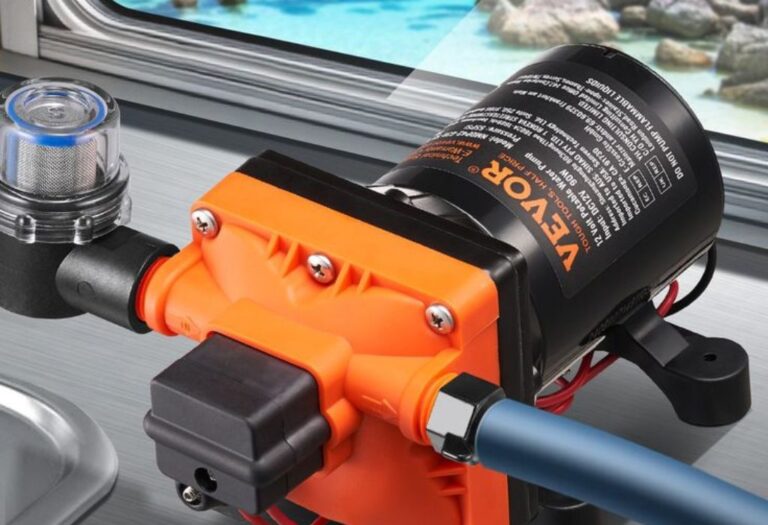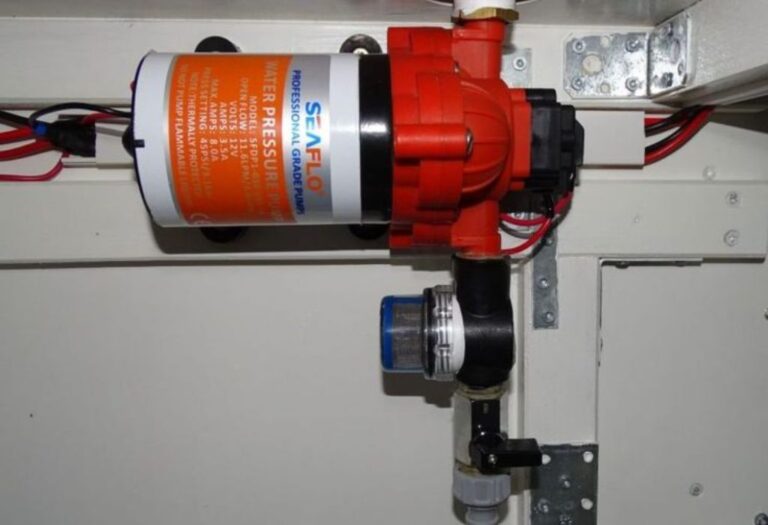Can You Mix RV Antifreeze with Water Safely?
The first frost of winter often catches RV owners by surprise. Imagine returning from a weekend trip only to find cracked water lines and frozen fittings—repairs that could easily have been prevented with the right preparation.
Every year, thousands of RVs experience plumbing damage from improper winterization. According to the RV Industry Association, freeze-related damage ranks among the top five repair issues reported during cold months. These costly problems often arise from simple misunderstandings about how to use RV antifreeze.
One of the most common questions owners ask is whether they can stretch their antifreeze supply by mixing it with water. It seems like a harmless shortcut—but doing so could dramatically reduce its ability to protect your plumbing in freezing weather.
This guide explains what happens when you mix RV antifreeze with water, why dilution is dangerous, and how to properly winterize your RV to avoid costly damage. By the end, you’ll know exactly how to keep your plumbing system safe and ready for winter’s chill.
What Is RV Antifreeze and Why It Matters

RV antifreeze is a specialized liquid designed to protect your vehicle’s plumbing system from freezing temperatures. It circulates through the pipes, preventing water from turning to ice and expanding inside the lines.
Unlike automotive antifreeze, RV antifreeze is non-toxic, typically made from propylene glycol or ethanol, making it safe for potable water systems. Using automotive antifreeze could contaminate your water system with harmful chemicals that are unsafe for consumption.
What is RV antifreeze?
It’s a non-toxic freeze-prevention solution formulated for RV water systems during cold-weather storage.
How does RV antifreeze differ from automotive antifreeze?
RV antifreeze uses propylene glycol or ethanol, while automotive antifreeze relies on toxic ethylene glycol unsuitable for drinking water systems.
Why is freeze protection important in an RV plumbing system?
When water freezes, it expands by about 9%, creating pressure that cracks plastic pipes and fittings, leading to leaks or total failure.
Can household antifreeze be used in an RV?
No, only RV-specific antifreeze should be used, as it’s safe for internal plumbing and easy to flush out during de-winterization.
When should RV antifreeze be added?
It’s best to apply it before temperatures consistently drop below 32°F (0°C) to ensure full protection before frost arrives.
Can You Mix RV Antifreeze with Water?
This is one of the most frequently asked questions by RV owners looking to save money or extend their antifreeze supply. The short answer: you shouldn’t—unless the product label explicitly says it’s a concentrate.
Mixing RV antifreeze with water dilutes its freezing protection capabilities. Most “ready-to-use” pink RV antifreeze products are pre-formulated to protect down to –50°F. Adding water increases the freezing point, leaving your pipes vulnerable to freezing at much higher temperatures.
Is it safe to add water to pink RV antifreeze?
No. Ready-to-use pink antifreeze is already mixed to its ideal ratio and should never be diluted.
What happens if you dilute RV antifreeze too much?
The freeze protection weakens significantly, allowing ice crystals to form inside the plumbing system.
Do all RV antifreeze products allow dilution?
Only concentrates labeled as “mix before use” should be diluted, and always according to the manufacturer’s exact ratio.
What’s the reason some RVers add water anyway?
Many mistakenly assume dilution saves money, but the cost of burst pipes and repairs far outweighs any short-term savings.
How can you identify if antifreeze is pre-diluted or concentrated?
Check the label: ready-to-use versions state their freeze protection temperature directly, while concentrates specify a required mixing ratio.
Risks and Consequences of Diluting RV Antifreeze
Diluting RV antifreeze may seem harmless, but it can lead to serious long-term consequences. The most immediate risk is that your plumbing system won’t be adequately protected when temperatures plunge.
When antifreeze is mixed with water, its freezing point rises. A product rated for –50°F could lose protection after just a small amount of water is added, exposing your pipes to freezing even at 20°F or higher.
What’s the worst consequence of diluted antifreeze?
Frozen pipes can crack, fittings can split, and seals can degrade—potentially leading to water leaks throughout the RV.
Can diluted RV antifreeze still protect to its rated temperature?
No. Even a 10% reduction in concentration can significantly raise the freeze point, rendering it ineffective for harsh winter climates.
Is water alone ever acceptable in an RV system during winter?
No. While compressed air can blow water out of lines, using water alone provides zero freeze protection once residual moisture remains.
Does mixing affect more than just pipes?
Yes, dilution also reduces corrosion protection and lubrication for valves, gaskets, and pump seals.
How costly can freeze damage be?
According to RVshare, repairing frozen lines can cost $500–$2,000, depending on the extent of the damage.
How to Properly Use RV Antifreeze (Without Mixing with Water)
Proper winterization ensures your RV is fully protected from cold-weather damage. Start by draining the entire water system, including the fresh tank, water heater, and holding tanks. Then, bypass the water heater so antifreeze isn’t wasted filling it up.
Next, use a water pump conversion kit or hand pump to push undiluted RV antifreeze through all water lines, faucets, showers, and toilets until pink fluid flows from every outlet.
Should the water heater be bypassed during winterization?
Yes. This prevents filling the 6–10 gallon tank with antifreeze unnecessarily and saves product.
How much RV antifreeze is typically needed?
Most travel trailers require 2–4 gallons depending on plumbing size (Camping World).
How do you know if the lines are fully protected?
Run each faucet until solid pink antifreeze appears, indicating the fluid has displaced all water.
What should be done after winterization?
Check all drains and P-traps, adding antifreeze where water might collect.
How to de-winterize and flush the antifreeze?
When spring arrives, simply flush the system with fresh water until it runs clear (RollinOnTV).
When Dilution Might Be Allowed — and When Not
There are rare cases where mixing antifreeze with water is acceptable, but only for concentrated formulas that specifically require it. These concentrates are designed for flexibility, allowing users to achieve different protection levels by adjusting the ratio.
However, this does not apply to the pre-diluted pink antifreeze sold in most RV stores. Mixing those products further with water destroys the manufacturer’s tested freeze point and voids warranty claims.
How can you tell if it’s a concentrate?
Check for instructions such as “Mix 1 part antifreeze with 1 part water before use.” Only such labels indicate a concentrate.
If concentrated, what ratio should be used?
Follow the manufacturer’s specific guidance—usually a 50/50 or 60/40 mix depending on desired freeze protection.
Is it safe to exceed the recommended dilution ratio?
No. Adding more water drastically reduces protection and risks pipe freezing even above 25°F.
Why do some brands still sell concentrates?
They allow users in milder climates to adjust protection levels while reducing costs.
Should ready-to-use antifreeze ever be diluted?
Never. These are pre-blended to precise protection levels and need no modification.
Other Winterization Strategies (Beyond Antifreeze)
While antifreeze is the most common winterization method, it’s not the only one. Many RV owners combine it with other techniques to ensure total freeze protection.
Using compressed air to blow out the water lines is an effective preliminary step before adding antifreeze. This method removes the majority of water, reducing how much antifreeze you’ll need later.
What is the blow-out method and when should it be used?
It uses compressed air to purge water from lines before antifreeze application, reducing dilution and waste.
Can insulation alone protect the system without antifreeze?
No. Insulation helps but can’t prevent freezing in severe conditions below 32°F for extended periods.
Does antifreeze protect the holding tanks?
Yes, when poured into drains and toilets, it prevents ice from forming in traps and tanks.
Are heated hoses useful?
Absolutely. Heated hoses prevent water from freezing while the RV is in use during winter stays.
Should tanks be emptied before storage?
Yes. Always drain gray and black tanks completely to avoid trapped water freezing and damaging valves.
Best Practices for Storing Your RV in Winter

Once your plumbing system is protected, a few extra steps can help keep your RV in great shape through the cold months.
Store your RV under a cover or in an enclosed area if possible to reduce exposure to snow and ice. Disconnect batteries and maintain charge separately to prevent freezing or sulfation.
Inspect seals, windows, and vents for cracks that could let in moisture. A small leak left unattended can lead to interior mold or structural damage during long storage periods.
Should you leave antifreeze in the system all winter?
Yes. It’s formulated to remain stable and effective for months without causing corrosion.
Can RV antifreeze go bad?
Unopened, it can last 2–3 years. Once opened, use it within a season for maximum reliability.
Is it necessary to add antifreeze every year?
Yes, it should be refreshed each winter, as old antifreeze can lose its effectiveness due to air exposure or contamination.
Can you reuse antifreeze from last season?
Reusing is not recommended unless you can confirm its integrity and freeze protection with a refractometer test.
Do you need to run the pump during storage?
No, but periodically checking for leaks or pressure changes ensures that seals remain intact.
Conclusion
Mixing RV antifreeze with water might sound like a clever way to save money, but it’s a costly mistake waiting to happen. Dilution weakens freeze protection, increases the risk of cracked plumbing, and voids manufacturer guarantees.
For full protection, always use non-toxic, undiluted RV antifreeze labeled “ready to use.” Only mix when a product specifically indicates it’s a concentrate requiring dilution.
Proper winterization is one of the simplest yet most crucial steps to protect your RV investment. By following correct antifreeze use and complementary winterization methods, you’ll avoid expensive repairs and enjoy peace of mind all season long.
Prepare early, follow product directions carefully, and your RV will stay safe, dry, and ready for spring adventures.
Frequently Asked Questions
Can you mix pink RV antifreeze with water to extend it?
No. It’s pre-diluted to a specific freeze point and should never be watered down further.
What temperature does RV antifreeze protect to?
Most pink RV antifreeze protects to about –50°F, depending on formulation and purity.
Is RV antifreeze toxic to pets or humans?
Propylene glycol-based RV antifreeze is non-toxic, but ethanol blends can still be harmful if ingested.
Can I pour RV antifreeze into my freshwater tank?
Yes, but only during winterization and always flush thoroughly before reuse in spring.
How do I dispose of used antifreeze?
Take it to a recycling or hazardous waste facility; never pour it onto the ground or drains.
Does antifreeze expire?
It generally lasts several years unopened, but should be replaced once contaminated or cloudy.
Can I use windshield washer fluid instead of antifreeze?
No. Washer fluid contains methanol, which can damage seals and is unsafe for water systems.
What color should RV antifreeze be?
Typically pink or blue. If the color changes or becomes cloudy, it may have degraded.
Is antifreeze safe for septic systems?
Yes, propylene glycol-based versions are septic-safe in small quantities.
Should I still use antifreeze if I blow out my water lines?
Yes, adding antifreeze ensures any trapped moisture in low points or fittings won’t freeze.
I’m David R. Coleman, the founder, lead writer, and lifelong tool enthusiast behind GarageToolPro.com. With years of experience in automotive repair, woodworking, and home DIY projects, I created this platform to share practical tips, detailed tool reviews, and step-by-step guides that help mechanics, hobbyists, and homeowners get the job done right the first time.






